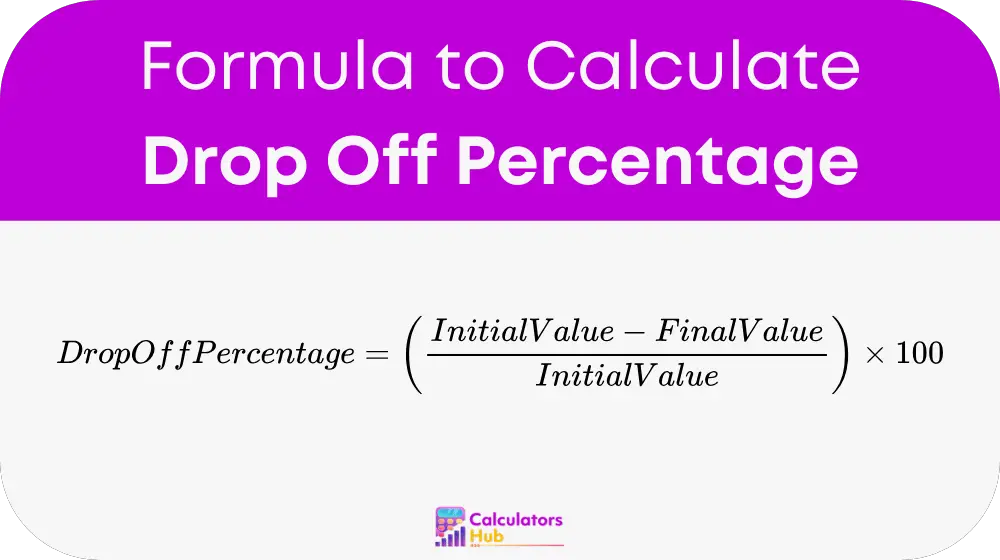The Drop Off Percentage Calculator is a helpful tool that calculates how much something has decreased over time, shown as a percentage. It’s commonly used in marketing, education, logistics, and website analysis. Whether you’re tracking how many users leave a website before completing a task, how many students drop out of a course, or how many products fail to reach their destination, this tool helps quantify that change.
This calculator falls under the Performance Metrics and Business Analysis Calculators category. It simplifies data analysis and supports quick decision-making by offering a clear percentage that shows how much of the original value is loss or reduce.
Formula of Drop Off Percentage Calculator

Where:
- Drop Off Percentage is the decrease expressed as a percentage
- Initial Value is the starting quantity or measurement
- Final Value is the ending quantity or measurement
This formula works across industries for tracking performance, customer engagement, product delivery, and more.
Quick Reference Table for Drop Off Percentages
Here’s a useful table that shows drop off percentages based on common values, helping you save time without doing manual calculations:
| Initial Value | Final Value | Drop Off (%) | Common Use Case Example |
|---|---|---|---|
| 1000 | 900 | 10% | Email campaign user drop off |
| 500 | 350 | 30% | Webinar attendance drop |
| 100 | 60 | 40% | Delivery loss in transit |
| 200 | 100 | 50% | Abandonment in sign-up funnel |
| 1000 | 100 | 90% | Website bounce before action taken |
This reference helps you make faster business or marketing decisions without needing to recalculate every time.
Example of Drop Off Percentage Calculator
Let’s say you launched a landing page that had 1,000 visitors. Out of those, only 300 completed the sign-up process.
Initial Value = 1000
Final Value = 300
Apply the formula:
Drop Off Percentage = ((1000 – 300) ÷ 1000) × 100
Drop Off Percentage = (700 ÷ 1000) × 100 = 0.7 × 100 = 70%
This means 70% of users dropped off before signing up, which may suggest a problem with the page design or offer clarity.
Most Common FAQs
A high drop off percentage (above 50%) usually signals a significant issue. This could be due to poor user experience, unclear messaging, or irrelevant content.
Yes, it works for any situation where you’re tracking a decrease — such as course dropouts, product losses in a warehouse, or decline in participation rates.
Drop off rate measures how many people start but don’t complete a process. Bounce rate measures users who leave immediately without any interaction.